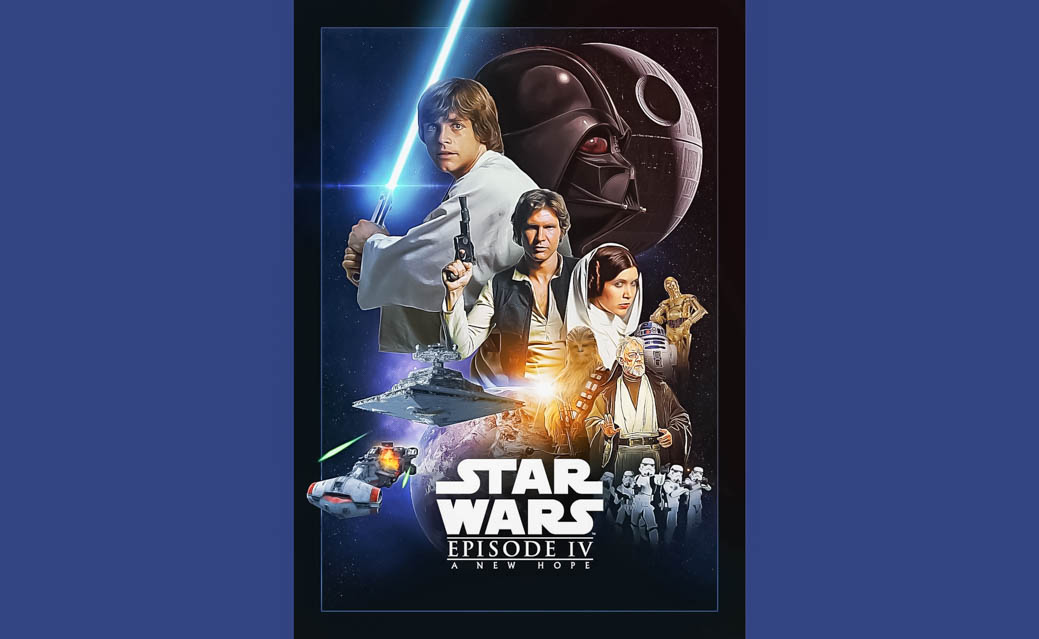The flawed spaces in Star Wars
Star Wars IV: A New Hope hits its target of success but misses opportunities for character and plot depth.
Spoiler warning: this article discusses the plot and scenes from the original Star Wars trilogy.
Before we begin, there are two things to get out of the way:
One—there is a difference between quality and enjoyment. I always distinguish between the greatest movie of all time (The Godfather) and my favourite movie of all time (About Time) and try to remember that they do not need to be the same. The former is a film hailed by critics and audiences as a dramatic masterpiece; the latter is a quirky rom-com about a romantically stunted time traveler. However, I have spent as much of my life watching About Time as Francis Ford Coppola spent directing The Godfather Trilogy.
Two—it is okay to like a bad movie. When someone says they think your favourite movie is a heaping, smelly, college-dorm-sized pile of trash, you do not have to obnoxiously explain why they are wrong. Do not take your taste too seriously. Liking bad movies or hating good movies does not matter, do not feel obligated to rationalize everything you enjoy.
Now that those disclaimers are out of the way, I should clarify that they are here to avoid any retaliative aggressions from the Star Wars community, although those might be largely unavoidable.
I’m not here to debate the influence or cultural significance of Star Wars or tell you that it should not be your favourite movie, I am only here to raise a few criticisms to humble the creator, George Lucas, and his fanbase. However, to satiate the self-gratifying Star Wars community, allow me to acknowledge some of the good things about Lucas’s 1977 film Star Wars IV: A New Hope, including but not limited to: the imaginative score by John Williams, the expansive worldbuilding, and Chewbacca (Peter Mayhew).
But enough with what is good about Star Wars, we have all heard it before. Let us look at what missed its mark.
The first criticism is that so many important plot points go strangely unexplained because of the narrative’s agenda. The first time Luke Skywalker (Mark Hamill) witnesses the power of the force is when Obi-Wan Kenobi (Alec Guinness) uses it to influence the minds of two Stormtroopers outside of the Mos Eisley Cantina, a tavern on the planet Tatooine.
Does the movie explain how that happened? No. Luke asks one question; the only reply is a janky transition, then the Cantina Band tune starts playing and everyone seems to move on. I am not saying that this scene needs to be explained for the audience’s sake. By all means, preserve a little mystery. But the continuity of the film is going to suggest that Luke just lets that slide?
This is not the only time that the film overlooks certain plot points for the sake of brevity. Many of the film’s most dramatic moments are brushed over. And yes, it is an adventure film. Obviously, they will not linger on the lasting trauma of seeing your entire planet blown up by a space station, but not even a little bit?
Princess Leia (Carrie Fisher) goes from being a scantily-dressed slave, to being tortured by her father, to kissing her brother, and yet the only time her emotions seem to boil over is when Han Solo (Harrison Ford) gets frozen? Luke returns home to find his aunt and uncle burned alive, and he only gets a few seconds of screen time before he goes off to the planet Alderaan? And that is fine. I can already hear people rationalizing their stoicism. But it is interesting that for all the film’s efforts to create a sense of realism, at least within a fictional framework, it persistently resists any emotional depth within its characters—unless of course that emotional depth was confined to love, jealousy, or revenge.
The second thing that has always bothered me about Star Wars is that its fanbase tends to continuously snub Stanley Kubrick and 2001: A Space Odyssey. They praise the special effects in Star Wars IV: A New Hope without any recognition for the leg work Kubrick did nearly a decade earlier with 2001: A Space Odyssey.
Yes, Star Wars pioneered some incredible visual effects, but people tend to praise it as though it were the first film to bring a depth of realism to space. Without the innovative set designs and special effects of Kubrick’s 2001: A Space Odyssey, Star Wars would not have been what it was.
Now, does this mean you have to pick a new favorite movie? No. It just serves to show that Star Wars is an unparalleled cultural text whose influence stretches wide but nonetheless is a film that has technical flaws.
Copy Editor (Volume 49) | aidan@themedium.ca —Aidan is completing a major in Professional Writing and Communications at the University of Toronto Mississauga. He previously worked as the Associate Editor for the Arts and Entertainment section of The Medium, and currently works as the Copy Editor for The Medium. When he’s not catching up on course work or thumbing through style guides, Aidan spends his free time exercising (begrudgingly), singing (unmelodically), and trying (helplessly) to read David Foster Wallace’s Infinite Jest. The latter of which has taken 3 years to reach the 16th page. You can connect with Aidan at aidan@themedium.ca.


